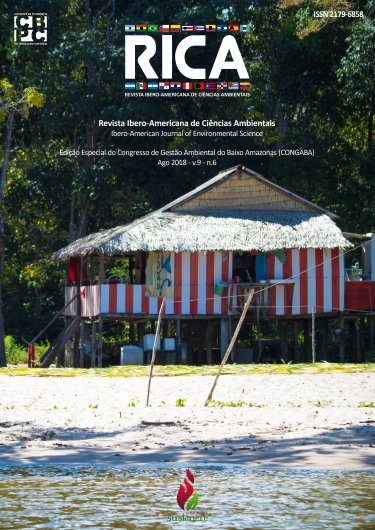Analysis of the relationship between population growth and deforestation in the state of Amapá, Brazil
DOI:
https://doi.org/10.6008/CBPC2179-6858.2018.006.0032Keywords:
Deforestation Border, Environmental services, Amazon rainforestAbstract
The state of Amapá, despite the history of low deforestation, presents conditions conducive to the border cycle that occurs in other Amazonian regions, with the aggravation of a dizzying population growth, which is pointed as a direct and indirect induction factor of deforestation. In this sense, this research aimed to analyze the degree of influence of this induction factor and its consequences in the context of land use changes in Amapá. To this end, the population growth in the state and in each of its 16 municipalities was first analyzed through consultations to the Demographic Census of the years 1980, 1991, 2000 and 2010. In order to identify the influence of population growth on deforestation, a Pearson's correlation analysis (r). From this it was estimated the deforestation rate until the year 2030, using linear regression. The state's population grew in just 36 years by about 325%, driven by the creation of Free Trade Areas and the elevation of the Territory to State category in 1988. Similarly, between 2000 and 2014, deforestation increased by 82%. There was a strong positive correlation between the factors analyzed (r = 0.95), proving that population growth had a direct influence on deforestation in the state of Amapá. Considering the increasing population increase, it has been estimated that Amapá tends to deforest another 134,644 ha by the year 2030. The strong relationship found in the study is due to the increased domestic demand for food and forest products to meet the needs of the population. growth, as well as foreign market opportunities, since Amapá was inserted commodity export route.
Downloads
Downloads
Published
Issue
Section
License
The CBPC - Companhia Brasileira de Produção Científica (Brazil CNPJ: 11.221.422/0001-03) the material rights of the published works. The rights relate to the publication of the work anywhere in the world, including rights to renewals, expansions and dissemination of the contribution, as well as other subsidiary rights. All electronically published works may subsequently be published in printed collections under the coordination of this company and / or its partners. The authors preserve the copyright, but are not allowed to publish the contribution in another medium, printed or digital, in Portuguese or in translation.









